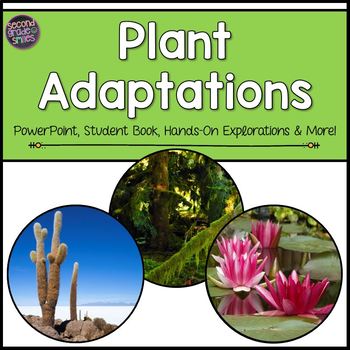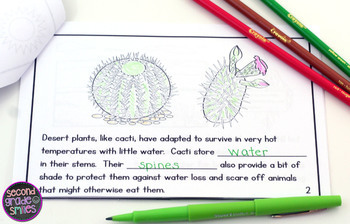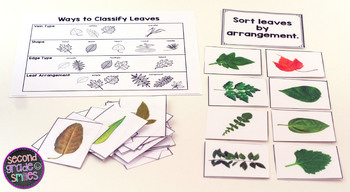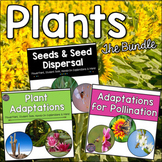Plant Adaptations
- Zip
What educators are saying
Also included in
- This primary science bundle was created to help teach students about adaptations that help plants meet their needs for for water, sunlight, space, pollination, and seed dispersal. It includes three PowerPoint presentations with corresponding student books for note-taking, hands-on explorations andPrice $13.00Original Price $17.00Save $4.00
Description
This plant adaptation primary science resource was created to help teach students about adaptations that help plants meet their needs for water, sun, air, and space in a variety of habitats.
Here’s what you’ll find inside:
• Plant Adaptation PowerPoint & Student Book – Click through and discuss this ten-slide PowerPoint, complete with real photographs and a few sentences of information per slide, to introduce students to examples of plants that have adapted to a variety of habitats. Students can follow along in their student books and fill in the blanks as they find the needed information in the slides. I like to store these books in a pocket in my students’ science notebooks so they can refer back to them throughout the unit. They are also great to send home to practice fluent reading and share what students are learning at school with their families. (Please note that although the words are the same as those on the PowerPoint, pictures in the student book are in clip art form, rather than photographs, to allow for easy black and white copying.)
• Ways to Classify Leaves Chart, Photos, and Sorting Cards – This chart and activity was designed to help students develop their scientific observation skills and vocabulary. You can discuss the chart together with your class and provide copies to store in science notebooks or folders for future reference. Then, divide students into small groups and ask them to sort real leaves or the provided leaf photos by different characteristics. Sorting task cards are included. Alternatively, you can use these materials for an open sort and ask student groups to sort their leaves according to characteristics of their own choosing and share that with the class. This activity is great for a science center!
• Leaf Adaptation Observation Activity – In this activity, students will continue to build observation skills as they take a closer look at three leaves and infer possible adaptations that help each plant to survive. I like to bring in real leaves for students to observe or ask students to bring them in from home, but you can also use the leaf cards from the sorting activity mentioned above. The second part of the activity, page 2, will require real leaves as students spray water from a spray bottle on their leaves and observe what happens. (If you do not have real leaves or a spray bottle, simply leave out this page.)
• Plant in a Box Experiment – For this experiment, you will need a plant of your choosing and a box. Following the steps provided, students will be guided to observe the plant before entering the box and then place it in a shady part of the box. (To do this, you can simply fold over and secure one box flap, or place the box on its side. Some parts of the box should still be exposed to light.) Students will hypothesize how they think the plant might adapt to meet its need for light and then record observations. In my own classroom, we observed once a week for four weeks before we saw the plant begin to move toward the light. When observations are done, students are prompted to write their conclusions.
• Plant Adaptation Sort It – This activity is another great science center option that can be done in pairs or individually. Students cut and paste to match examples of plant and habitat names with sketches of the plant, and a description of its adaptations. In my own classroom, I have students work in partnerships and encourage them to explain their choices to one another. You may want to allow students to use their Plant Adaptations books for a bit of support as they complete this activity.
Teachers Like You Said...
⭐⭐⭐⭐⭐ Extremely satisfied
"This was an awesome resource for teaching my 3rd graders about plant adaptations! They were engaged and loved it! I found it easy to use." - Marion S.
⭐⭐⭐⭐⭐ Extremely satisfied
"I LOVE this bundle. It provides an easy way for students to take notes and I really love all the activities that are included. They are fun and meaningful hands on activities and labs that make the information more concrete for young learners! My parents enjoy coming in to help with these activities! Thanks so much!" - Ashley H.
These activities may be used to address the following Next Generation Science Standard:
2-LS4-1. Make observations of plants and animals to compare the diversity of life in different habitats.
Related Products
☆ Parts of a Seed & Plant Adaptations for Seed Dispersal
If you and your students enjoy this resource, please consider following my store. Freebies and new products are posted regularly. You can contact me with any questions or requests at secondgradesmilesstore@gmail.com.
- Amanda Taylor @ Second Grade Smiles






